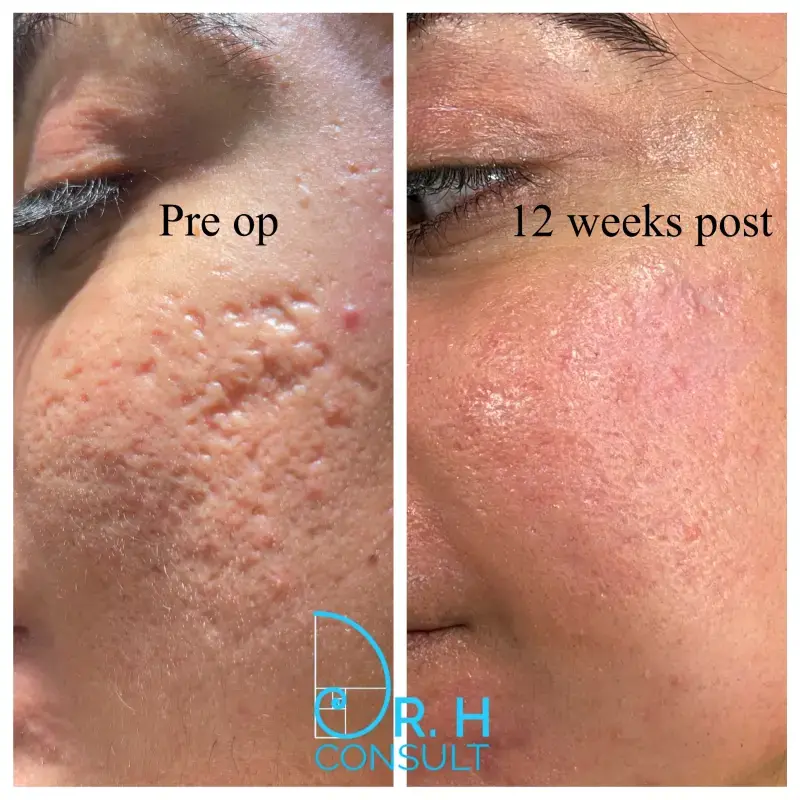Exploring Skin Problem: Determining and Dealing With Acne Scars for Healthier Skin
Acne marks stand for a considerable issue for individuals seeking to maintain healthy and balanced skin, as they can affect both appearance and self-worth. Recognizing the numerous types of marks, from atrophic to hypertrophic, is important for figuring out ideal therapy choices.
Comprehending Acne Scars

The body's natural recovery procedure can result in either atrophic marks, which show up as depressions in the skin, or hypertrophic scars, which are elevated and result from overproduction of collagen. In addition, the psychological toll of acne scars need to not be underestimated; lots of people report sensations of embarrassment, stress and anxiety, and decreased self-esteem. This psychological worry can affect social communications and general lifestyle.
Addressing acne marks requires a detailed understanding of their development and influence. Recognition of the potential for long-term repercussions linked with unattended marks can motivate individuals to seek appropriate treatments. Early intervention and efficient administration approaches can substantially boost skin look and improve emotional strength, stressing the relevance of recognizing the intricacies bordering acne marks.
Types of Acne Marks
Acne marks can be classified into distinct types, each displaying distinct attributes and needing particular treatment approaches. acne treatment for sensitive skin. The main sorts of acne scars include atrophic, hypertrophic, and keloid scars

Hypertrophic scars, on the other hand, are elevated over the skin level and are the outcome of extreme collagen manufacturing throughout the recovery procedure. They generally remain within the limits of the initial acne sore. Keloid scars are comparable yet extend past the initial injury website, developing larger, elevated locations that can be agonizing or scratchy.
Comprehending these kinds of marks is vital for choosing proper treatment options. Various marks may respond better to certain treatments, such as laser therapies, fillers, or medical interventions, highlighting the significance of a tailored technique to acne mark administration.
Identifying Your Marks
Acne marks generally drop right into 2 categories: atrophic and hypertrophic marks. These can better be classified into ice-pick marks, boxcar marks, and rolling scars, each displaying unique features and calling for various strategies for evaluation.
Hypertrophic scars, on the other hand, are raised and happen due to excessive collagen manufacturing throughout the recovery process. Acknowledging the certain features of your marks-- such as structure, deepness, and size-- is important for proper identification (acne treatment for sensitive skin). In addition, consider the distribution of scars throughout your skin, as this can show the extent and period of the acne problem
Engaging with a skin specialist can give beneficial insights right into the nature of your scars, helping in the distinction in between numerous types. An extensive understanding of your marks will ultimately lead to a much more tailored and effective therapy plan, making sure a more clear and much healthier skin.
Treatment Options Available
Determining the specific kind of acne marks existing on your skin lays the foundation for discovering reliable therapy options. Usual sorts of acne scars consist of atrophic (clinically depressed), hypertrophic (raised), and post-inflammatory erythema.
For atrophic scars, options such as chemical peels, microneedling, and laser resurfacing are widely utilized. Chemical peels utilize acids to eliminate the outer layer of skin, advertising brand-new cell development. Microneedling involves tiny needles that develop micro-injuries, promoting collagen production. Laser resurfacing targets damaged skin cells, improving appearance and tone.
Hypertrophic scars can be treated with corticosteroid shots to squash the mark or go to my site laser treatment to lower soreness and enhance appearance. Silicone gel sheets and stress dressings might likewise assist in taking care of elevated marks.
On top of that, facial fillers can momentarily complete anxieties from atrophic scars, while surgical excision may be suitable for serious situations. Each treatment choice has its considerations and advantages, making it vital to consult with a skin specialist. They can give personalized suggestions based on the kind and seriousness of your scars, as well as your skin type and overall wellness.
Tips for Avoidance
Reliable prevention methods can substantially decrease the probability of developing acne scars. Using non-comedogenic products assists stop clogged up pores, which can aggravate acne.
Avoiding need to pop or pick acne lesions is important, as this can bring about much deeper skin damages and her comment is here boost the threat of scarring. Instead, consider making use of a cool compress or non-prescription therapies to decrease swelling and inflammation.
Sunlight security is another important aspect of avoidance; ultraviolet (UV) rays can dim marks and hinder the healing procedure. Using a broad-spectrum sunscreen with at least SPF 30 daily can protect the skin and promote also healing.
Last but not least, preserving a well balanced diet plan abundant in minerals, vitamins, and anti-oxidants supports skin wellness and recovery. Staying moisturized and handling tension degrees can likewise play a substantial function in reducing acne flare-ups. By executing these methods, individuals can significantly lessen their chances of establishing acne marks.
Verdict
In final thought, understanding and determining acne scars is crucial for efficient treatment and achieving healthier skin. Numerous kinds of acne scars, consisting of atrophic and hypertrophic official site marks, require details interventions customized to individual requirements.
The body's all-natural recovery process can result in either atrophic marks, which show up as anxieties in the skin, or hypertrophic scars, which are increased and result from overflow of collagen. They are more divided into three subtypes: ice pick scars, boxcar marks, and rolling marks. Acne marks typically fall right into 2 groups: atrophic and hypertrophic marks. These can even more be classified into ice-pick marks, boxcar marks, and rolling marks, each showing distinctive features and needing various strategies for evaluation.
Numerous kinds of acne scars, consisting of hypertrophic and atrophic marks, demand details interventions tailored to specific needs.